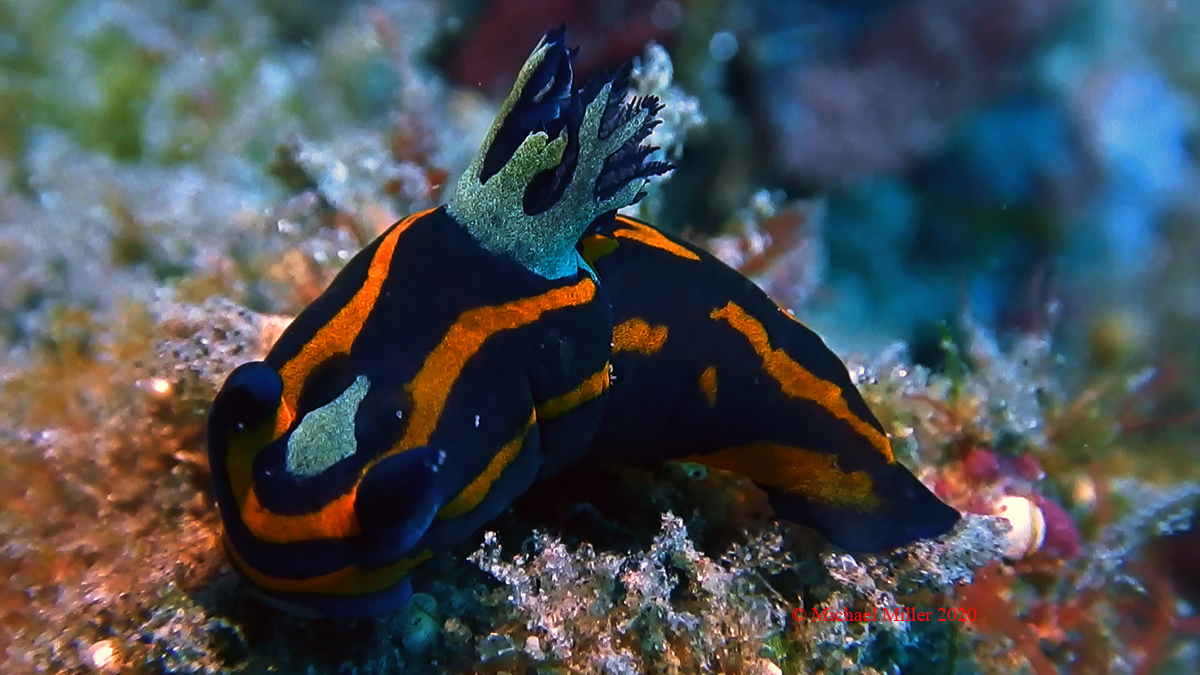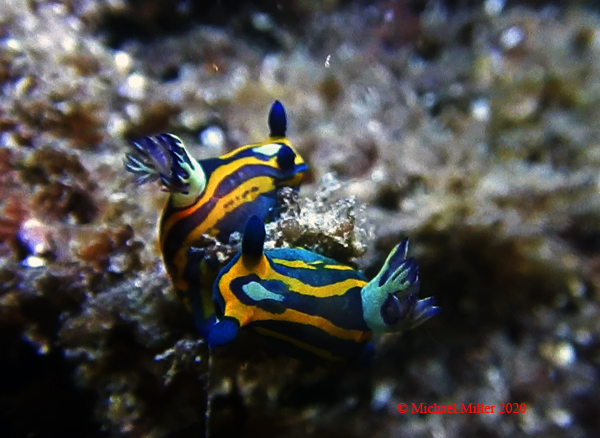 |
Tambja sp. 4
Image courtesy of WebmasterDive Site Seraya Secrets
Villa Markisa Dive Resort
Bali, Indonesia
Image courtesy of Webmaster
 | Tambja sp. 4 (Undescribed)
You can see this big boy a mile away with its bright yellow to orange lines on a dark blue background. It also has a light blue mark on the head behind the rhinophores and on the anterior face of the gill. Tambja Burn, 1962, has more species than any other of the Nembrothinae. We suspect that it is not a single natural group but rather a collection of several distinct clades of species. As suggested in NSSI 2nd Ed, more work is needed to sort out the higher systematic of the group. Although taxonomy at the species level is well understood. Tambja sp. 4 reaches up to 40 mm in length and is currently known only from Indonesia. Reference: Pola, Marta & Cervera, Juan Lucas & Gosliner, Terrence. (2005). Four new species of Tambja burn, 1962 (Nudibranchia: Polyceridae) from the Indo-Pacific. Journal of molluscan studies. 71. 257-267. 10.1093/mollus/eyi034.
Sammamish, WA 98074 Mar. 2020 Send Dave email at davidwbehrens@gmail.com |

Attention all you Sluggers, and you know who you are! The NSSI 2nd edition is available in ebook PDF and book form . The hard back version will become available Nov. 1st. Both will cost $65 (individually). You will need to jump through a few hoops to get the electronic version as pdf distribution is protected by Adobe ID!! Please read the following to enable reading your electronic purchase! This new 2nd Edition is updated and reorganized, including 185 new species. Among other features, the new edition includes additional photographs of species, an identification key, and an up-to-date classification reflecting the latest evolutionary relationships. The Indo-Pacific represents the largest expanse of tropical ocean in the world, stretching from the Indian Ocean coast of southern Africa and the Red Sea to the central Pacific of the Hawaiian Islands, Easter Island and the Marquesas. This region supports the most diverse marine fauna of any place in the world for most groups of marine organisms. The nudibranchs and sea slugs are no exception to this rule; there are about 3,000 described species of these organisms in the world and at least 40% of these have been found exclusively in the Indo-Pacific tropics. This book illustrates 2,138 Indo-Pacific nudibranchs and sea slugs, including many undescribed species.
|
